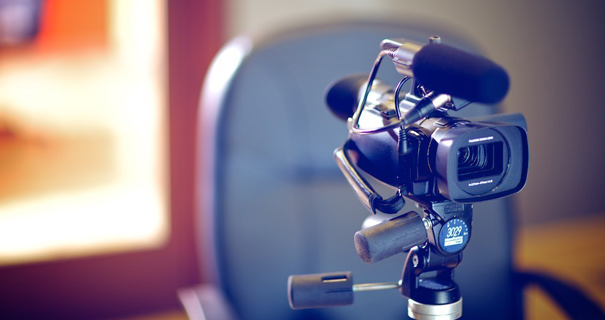The Role of Trial Presentations in Creating Persuasive Closing Arguments
The Role of Trial Presentations in Creating Persuasive Closing Arguments
Blog Article
Enhancing Your Lawful Approach With Expert Test Presentations
In today's lawful landscape, the importance of professional trial discussions can not be overstated. As lawyers browse the intricacies of the court, the ability to successfully share complex debates is vital. By transforming dense lawful concepts into interesting narratives, professionals can enhance juror comprehension and retention. In addition, integrating multimedia tools and storytelling strategies can create a compelling backdrop that not just notifies yet additionally reverberates mentally with jurors. However, the inquiry remains: what certain methods can lawyers utilize to raise their presentations and inevitably influence trial end results?
Relevance of Trial Presentations
Test discussions work as a pivotal component in the lawful process, efficiently linking the gap in between complex legal arguments and juror comprehension. The ability to boil down intricate legal principles right into easily accessible stories is essential for jurors, that must make enlightened choices based on the evidence provided. A well-crafted presentation not only clears up the case yet additionally enhances the persuasiveness of the argument, ultimately affecting the court's assumption.
In an age where attention periods are restricted, the value of involving visuals and clear interaction can not be overemphasized. Test presentations serve to record jurors' interest and preserve their focus, permitting a deeper understanding of the realities and legal concerns handy. They give a structured structure that arranges the situation, promoting rational flow and comprehensibility.

Key Parts of Effective Presentations
An efficient presentation in a courtroom establishing rest on numerous vital elements that jointly enhance its impact. Leading among these is clarity of message. Attorneys need to boil down complicated legal arguments into succinct, quickly digestible factors to ensure jurors realize the core issues. Complementing this clearness is the use of an engaging narrative framework. An efficient discussion, with a clear start, middle, and end, guides the audience via the situation, making it more relatable and unforgettable.
Aesthetic aids play an essential role as well, as they can considerably strengthen essential messages. Efficient usage of exhibits, graphes, and layouts can make clear complex details and highlight essential facts. In addition, the speaker's shipment style is vital; confident, engaging communication promotes trustworthiness and preserves jurors' interest.
Finally, understanding the audience is vital. Tailoring the discussion to the jurors' backgrounds and worths can promote a connection that improves understanding to the disagreement. In recap, clearness, narrative why not try here framework, aesthetic help, distribution design, and audience recognition are important to crafting an efficient court presentation that reverberates with jurors and sustains the overarching lawful approach.
Modern Technology in Trial Presentations
Modern court rooms significantly incorporate technology to improve test discussions, improving the fundamental elements of effective communication developed through clear messaging and interesting narratives. The consolidation of audio-visual aids, such as high-definition projectors and interactive display screens, permits lawful teams to existing evidence in a much more compelling manner. This technology not only records the jury's attention however additionally promotes a far better understanding of intricate information.

Digital devices, including presentation software and electronic display monitoring systems, streamline the organization and retrieval of evidence (trial presentations). Lawyers can swiftly reference records, pictures, and video clips, making sure that vital details is conveniently available during the test. Furthermore, using computer animations and simulations can vividly illustrate key ideas, making them less complicated for jurors to understand
Additionally, court room modern technology promotes cooperation among lawful experts, allowing real-time changes to discussions based on court responses or unanticipated developments. The capability to adjust on the fly is critical in preserving involvement and enhancing debates. As technology remains to advance, its duty in test discussions will definitely increase, providing cutting-edge ways to interact effectively and persuasively click here to read in the pursuit of justice.
Narration Methods for Effect
Efficient narration techniques are important in providing impactful trial discussions, as they transform intricate legal disagreements into relatable stories. A well-crafted story astounds the audience, making it easier for jurors to understand and keep in mind essential points.
To develop an engaging story, lawyers need to concentrate on establishing a clear framework with a start, middle, and end. The beginning must introduce the instance context and its importance, while the middle elaborates on the core problems, weaving in proof and witness testimonies that sustain the debate. Effectively, the finishing need to reinforce the designated message, driving home the desired end result.
Additionally, incorporating emotional elements can dramatically improve the narrative's impact. By humanizing the case, lawyers can stimulate empathy, allowing jurors to link directly with the truths offered. Making use of brilliant imagery and narratives can likewise aid in showing complex styles, making them extra tangible and remarkable.

Tips for Application in Court
Implementing storytelling methods in court needs mindful planning and implementation to ensure that the story resonates with jurors. Begin by determining the core message of your instance and aligning it with the psychological and accurate aspects that will certainly engage the jury. Develop a clear and engaging narrative arc that consists of an intro, a growth of dispute, and a resolution.
Use aesthetic aids to enhance storytelling; exhibitions, timelines, and multimedia discussions can assist show complicated ideas and keep juror interest. Practice your shipment, making sure that body movement, tone, and pacing follow the emotional weight of your story.

Verdict
In final thought, expert test presentations play an essential role in enhancing official statement legal approaches by properly communicating intricate disagreements to jurors. The integration of aesthetic aids, clear stories, and emotional narration cultivates juror interaction and comprehension.
Report this page